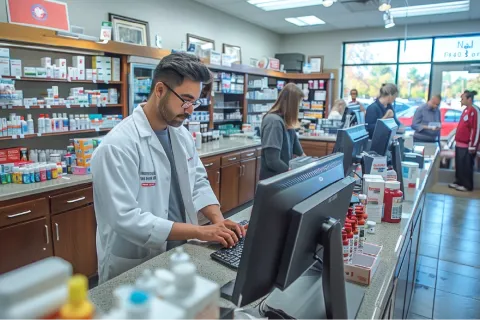
Navigating the world of Regulatory Affairs in the Life Sciences industry can be a challenging task. One of the most critical components that organizations must manage effectively is the implementation of Current Good Manufacturing Practices (cGMP) that are compliant with the Quality Management System (QMS). However, with strategic planning, careful execution, and an understanding of the key factors involved, achieving this is more than feasible.
In the pharmaceutical industry, a QMS needs to reflect the requirements specified in the applicable GMP regulations so that companies can ensure uniform product quality. A cGMP, on the other hand, refers to the most up-to-date regulations that are in place. GMP guidelines help ensure that the drug products are safe, reliable, and efficient for their intended use. If you are looking for support with the implementation of a cGMP-compliant QMS, consult a proven expert.
cGMP guidelines are applicable to the complete product lifecycle, from raw materials and components up to the finished product, including its discontinuation. In the United States (US), companies must ensure compliance with the US Food and Drug Administration’s (USFDA)’s GMP. Companies to which GMP is applicable are constantly improving, and so are the related requirements. This blog will break down the necessary steps for implementing a cGMP-compliant QMS in your organization.
Understanding cGMP Compliance
A QMS that reflects a company’s specific needs is essential for achieving compliance with GMP requirements. The first step to implementing a cGMP-compliant QMS is understanding what cGMP compliance entails. cGMP regulations apply to pharmaceutical, biotechnology, medical device, and food companies, among others. They address several operational aspects, including personnel qualifications, sanitation, equipment verification, process validation, and record keeping.
Developing a Quality Policy
The journey toward a compliant Quality Management Plan (QMP) begins with a robust quality policy. This policy forms the foundation of your QMS. It should reflect your company’s commitment to quality, customer satisfaction, and continuous improvement. Moreover, your quality policy should align with your business goals and be communicated and understood across all organizational levels.
Establishing SOPs
Standard Operating Procedures (SOPs) form the cornerstone of cGMP compliance. They ensure consistency in operations and serve as a reference point for training and troubleshooting. All processes involved in production, quality control, quality assurance, and other related activities should be included in your SOPs in detail. Ensure that your SOPs are clear, comprehensive, and reviewed regularly for improvements.
Implementing Quality Controls
Quality controls are essential for identifying and rectifying faults in the production process. They ensure that your products consistently meet the required standards and regulations. From incoming raw material inspections to in-process checks and final product release, effective quality controls should permeate every aspect of your production process.
Staff Training and Development
A well-trained workforce is key to achieving cGMP compliance. Regularly train your staff to understand and effectively execute SOPs. Remember, the training should not be a one-time event; rather, it should be an ongoing process consisting of refresher courses, seminars, and workshops.
Documentation
cGMP compliance requires thorough and accurate documentation. Pharmaceutical companies must maintain records of every aspect of their production, quality control, and quality assurance activities. These records are essential for tracking and tracing any quality concerns that may arise during audits and inspections. Implement a system that ensures secure storage, easy retrieval, and safeguarding of your records.
Regular Audits
Regular internal and external audits form a vital part of a cGMP-compliant QMS. They provide insights into potential quality issues, non-compliance areas, and improvement opportunities. Having a proactive approach to audits ensures continuous adherence to cGMP guidelines.
Continuous Improvement
cGMP compliance is not a one-and-done process. Instead, it demands a commitment to continuous improvement. Incorporate mechanisms in your QMS that can help identify areas for improvement. This can be achieved through regular review meetings, customer feedback, and robust Corrective and Preventive Action (CAPA) systems.
Implementing a cGMP-compliant QMS is not merely a Regulatory requirement, but it is also a strategic choice that can lead to enhanced product quality, customer satisfaction, and business success. Remember, while the journey may seem challenging, you can make it smoother with a thorough understanding of cGMP principles, strategic planning, effective execution, and a committed team.
Our team of experts at Freyr provides Regulatory compliance services, which include GMP consultation, assistance in SOP creation, and implementing effective and compliant QMS that aligns with your business services as per the applicable Regulatory requirements. Consult us today for more details!









